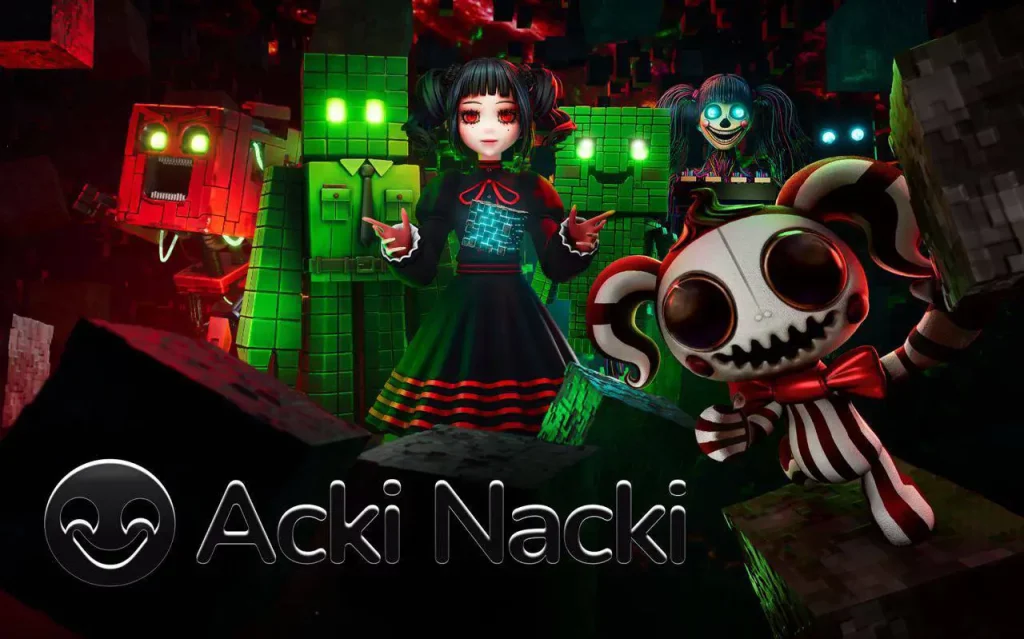Summary
The Web3 Voice AMA with Mitja Goroshevsky offers a rare, unfiltered look into the technical foundations, roadmap, mentality, and philosophy behind Acki Nacki. What begins as a casual conversation quickly evolves into a deep exploration of blockchain design, network scaling, Popits, mining, gaming integration, token mechanics, and the massive future being built around the Acki Nacki ecosystem.
This article distills the full discussion into a coherent narrative that captures the spirit and detail of Mitja’s explanations, from the motivations behind design choices to the challenges of launching a performant Layer-1.
A conversation that opened the engine room
The AMA begins as many do, informally, with humor, waiting for participants to join, but the tone shifts once the discussion centers on Acki Nacki. Mitja enters the conversation ready to answer questions about the chain’s successful mainnet launch, the game ecosystem, Popits, mining, the economics behind NACKL, and the deeper architectural philosophy behind the project.
Even early in the session, it becomes clear that Acki Nacki is not just another blockchain. It is an engineering-first network, where design follows physics, not hype, and where every feature, from Popits to parallel execution, is part of a unified architecture.
The Acki Nacki ethos: Performance, simplicity, and real security
Mitja repeatedly returns to a core idea:
A blockchain should work like a highly efficient distributed computer, built to scale, to be fair, and to deliver value without unnecessary complexity.
Several principles stand out:
1. Fast Finality as a Design Law
Acki Nacki is built around extremely fast finality, tracking ~2×RTT (round-trip time). The system doesn’t try to reinvent physics, it optimizes within its constraints. This makes the chain inherently efficient, with minimal redundancy and fewer wasted cycles.
2. Parallel Execution as a Default
Many chains bolt on parallelism. Acki Nacki starts from it. Execution is fanned out across many machines while only the necessary subset verifies. The result is an architecture that scales linearly with hardware.
3. Security Through Diversity
Block Keepers, Attestations, Acki-Nacki verifiers, each plays a role in a probabilistic, multi-tiered security model. The system is designed so that attacks become astronomically unlikely, even when adversaries are economically sophisticated.
Mitja describes the network as “almost impossible to break”, comparing the probability of a coordinated attack to the likelihood of catastrophic cosmic events, and this is not rhetoric but mathematical modeling.
Popits, Mining, and the Rise of Mobile Verifiers
Much of the AMA centers on the Popit system, a surprisingly powerful mechanism that merges gameplay, distributed cryptographic work, and reward distribution into a single user-friendly interface.
Why Popits Matter
Popits are not a gimmick. They solve a number of real problems:
- They onboard users without requiring blockchain knowledge.
- They distribute mining opportunities across large populations.
- They provide real cryptographic work via tapping.
- They feed the economic system with decentralized validation.
Mitja repeatedly emphasizes that this is real mining, similar in principle to proof-of-work, but adapted for mobile phones. Every tap produces a cryptographic proof. Every user becomes a tiny verifying node.
Anti-Bot Protection
Several participants ask why not all taps register. Mitja explains:
- Each tap is a cryptographic computation.
- Mobile hardware has limitations.
- Network latency plays a role.
- Anti-autoclicker protections throttle unrealistic patterns.
The point is simple:
Acki Nacki rewards humans, not scripts.
Mitja even jokes that future updates may check fingertip warmth to ensure a human is really tapping.
Mining, Rewards, and the Economics Behind NACKL
One of the most sensitive and frequently revisited topics is mining rewards. Users ask:
- Why did I get more yesterday than today?
- Why did epoch 1 give such high payouts?
- How is the reward per Popit determined?
Mitja’s answers are consistent:
Rewards follow global emission, not arbitrary bonuses.
A Popit only earns rewards if:
- It enters the top 1%,
- It is successfully minted,
- And the global reward-per-second multiplied by the seconds since the last mint is allocated and split among contributors.
This leads to some outcomes:
- The very first Popit minted after mainnet launch got almost the entire epoch reward because the user count was extremely low.
- As users grow, emission stays emission-based, meaning more competition.
- Rewards remain fair because they are proportional to real participation.
Mitja repeatedly emphasizes:
There is no centralized control. Everything is formula-driven.
Mobile Verifiers and Network Load, Will Popits Flood the Chain?
A pivotal question arises:
If millions of users become Mobile Verifiers, will the network become overloaded with Popit transactions?
Mitja’s answer is clear:
No, the architecture is designed for this scenario.
Popits do not overwhelm the chain because Acki Nacki can scale in parallel, and Popit validation is part of the intended workflow. The system is built to handle large swarms of mobile validators without compromising other dApps or future games.
Games, Airdrops, and Priorities
Some AMA participants eagerly ask about upcoming airdrops, especially related to the game Die Last. Mitja’s response is pragmatic:
- Nothing has changed,
- Game integration remains important,
- But priorities are currently focused on ensuring Popits, mobile verification, game backends, and mainnet stability work flawlessly.
He stresses that airdrops are not canceled, only sequenced behind more critical milestones.
Nodes, State Copying, and Validation Behavior
A technical question arises:
Can you run a node that copies the chain but doesn’t verify anything?
Mitja answers succinctly:
No.
Acki Nacki does not allow passive nodes that simply mirror state without contributing to validation. Every node must participate, even minimally, in verification or attestation processes.
Market Dynamics, NACKL Pricing, and Free Float
At one point, the discussion moves toward supply and future markets. Mitja speculates about the early free float of tokens:
- Around ~50 million NACKL mined by mobile verifiers in earlier stages,
- The price will be determined by who is willing to break their Mamaboard value and sell at a given moment,
- Markets will emerge organically once buyers show up.
He emphasizes this is not about setting prices, it’s about natural market behavior.
A Community-Driven Future
Toward the end, as the session runs nearly three hours, participants express gratitude for the unprecedented transparency. Mitja remains appreciative, even humorous. The AMA concludes with an invitation for further community engagement, a reminder that Acki Nacki’s future will be built not only by engineers, but by users, gamers, tappers, and creators.
Conclusion
The Web3 Voice AMA paints a compelling picture of Acki Nacki not merely as a blockchain, but as a cohesive system:
- Technically ambitious, but grounded in physics.
- User-friendly, but powered by real cryptographic work.
- Designed for massive parallelism, fair participation, and global scalability.
Mitja’s explanations demonstrate that Acki Nacki is more than a chain, it is a foundational layer for an entire ecosystem of games, applications, and decentralized computation.
This AMA underscores that the project is driven by engineering excellence, community inclusion, and a relentless commitment to security and fairness.





